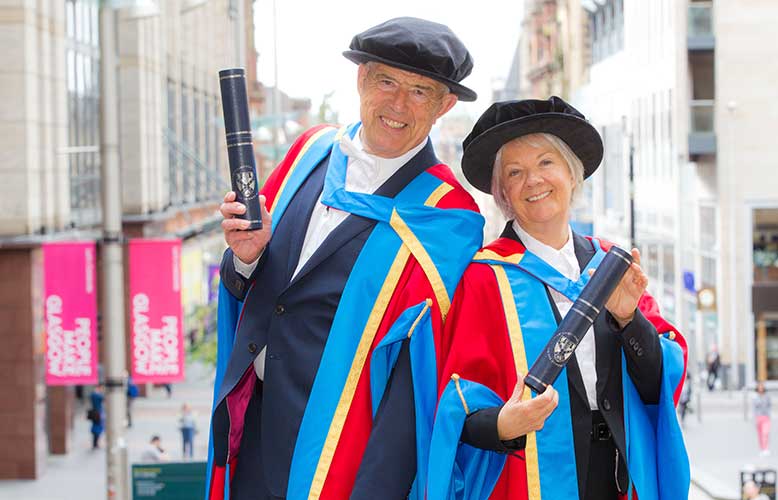- OT
- Life in practice
- Career development
- 50 years in optics
50 years in optics
Co-founder of Specsavers, Doug Perkins, provides insight into the changing face of the profession 50 years after he qualified as an optometrist

11 December 2017
What was your first experience of optics?
My first ‘real’ experience of optics was on 1 January 1967 when my wife, Mary, and I opened the doors to our first practice. We had taken out some bank loans and had all the fear of whether we could make the business a success running through our veins – it was a very exciting time.
It was also the first day that we were listed on the GOC registers as fully qualified optometrists. However, we had both experienced very good pre-reg placements, which had taught us what value for money in optics and good customer service was all about. Therefore, we were prepared, and jumped in at the deep end both feet first. It was a fantastic experience that we still remember fondly today.
Why did you embark on a career in optics?
We weren’t taught much about careers in schools in the 50s and my first calling was medicine. However, due to a lot of rugby commitments back in the day, I didn’t get the grades that I needed. On learning this, I began to research alternative careers and that is when I discovered optics.
I’ve always been extremely happy with my career choice and my life that has emerged from that decision. So I’m glad I didn’t get the grades.
"It was an absolutely amazing time and provided me with the foundation of everything that I have done thereafter"
Has your career been everything that you expected?
It has certainly been everything that I expected and much, much more. I enjoyed almost 20 years in active practise prior to the launch of Specsavers and really enjoyed it. It was a great feeling of being able to help virtually 100% of people who came through the practice doors. It was an absolutely amazing time and provided me with the foundation for everything that I have done thereafter.

What’s been the highlight of your career so far?
Besides the start up process and the invention of the joint venture partnership model that we developed when we established Specsavers, it probably has to be Australia where I used my whole toolbox of knowledge to launch the company into the market. That happened as recently as 10 years ago and we were able to open 100 practices in 100 days. No one had ever heard of Specsavers in Australia when we arrived and today we are the number one opticians there.
Have you experienced any setbacks along the way?
I can’t think of any setbacks, but I wish that we had started Specsavers’ partnership model slightly earlier. I also wish that in my early career I had taken more of an interest in the work of local optical committees, and done more to try to influence and make a contribution there. They are not setbacks per se, but, with the benefits of hindsight, they are things that I would have done differently.
If you could change one thing about optics, what would it be?
In my view, optometry has not changed enough during my 50 years in the sector – the relationship between the optometrist and those working with the hospital eye services, in particular, is just about the same as it was 50 years ago, which is very disappointing. As a result, the profession is now facing a lot of challenges about the future of optometry and the lack of change is coming back to bite us. So I really would have liked for the profession to have been more prepared for change a decade or so ago.
What do you think optics will look like in 30 years time?
We are at a crossroads at the moment and if the last 10 years is repeated in the next 10 years, I see us becoming a more retail optics-led profession at a lower level. But if we aspire to be as good as the professions are in Australia and the US, we must make some commitments now.
Advertisement


Comments (0)
You must be logged in to join the discussion. Log in